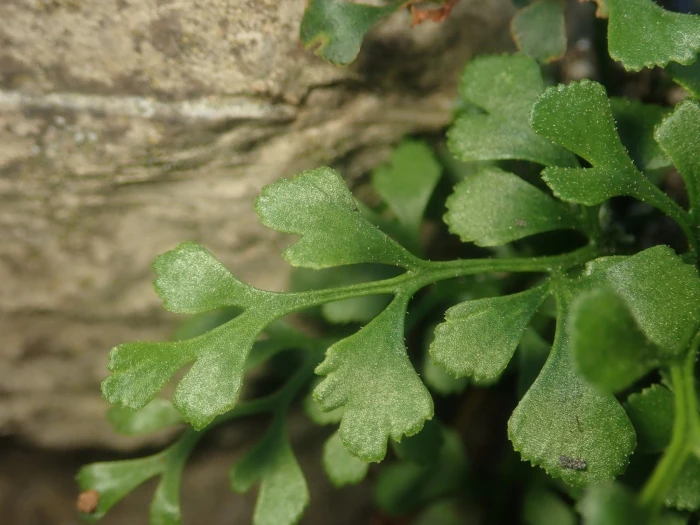Wall-Rue
(Asplenium ruta-muraria)
Wall-Rue (Asplenium ruta-muraria)
/
/

Alexis
CC BY 4.0
Image By:
Alexis
Recorded By:
Copyright:
CC BY 4.0
Copyright Notice:
Photo by: Alexis | License Type: CC BY 4.0 | License URL: http://creativecommons.org/licenses/by/4.0/ | Rights Holder: Alexis | Publisher: iNaturalist | Date Created: 2022-09-12T09:46:18-07:00 |
























Estimated Native Range
Climate Requirements for Medford, New York
| This Plant | Your Site | Plant Suitability for Your Location | ||
|---|---|---|---|---|
| • Precipitation | 4" - 167" | 42" | Aquatic | Aquatic |
| • High Temp. | 44°F - 97°F | 82°F | Your summer temperatures are normal for this plant. | Excellent |
| • Low Temp. | -45°F - 51°F | 23°F | Your winter temperatures are normal for this plant | Excellent |
This plant may not grow well at your location - your precipitation is too high.
Summary
Asplenium ruta-muraria, commonly known as Wall-rue, is a small, evergreen epipetric fern that thrives on limestone and other calcareous substrates. It is native to a variety of habitats including rocky slopes, cliffs, and walls, particularly where limestone is present, across Europe, East Asia, and eastern North America. Wall-rue typically grows to about 5 inches (13 centimeters) in length, with bluish-green, heavily sub-divided fronds that give it a delicate, lace-like appearance.
Wall-rue is valued for its ability to grow in challenging conditions, such as vertical rock faces and old masonry, where few other plants can survive. This makes it an interesting choice for rock gardens, green roofs, and as a part of living walls in garden design. It requires minimal maintenance, thriving in full sun to part shade and preferring a well-drained, alkaline soil. Wall-rue is not commonly affected by diseases or pests, but it can be sensitive to air pollution and excessive moisture. It is not known for being invasive outside its native range, but it can spread in suitable habitats.CC BY-SA 4.0
Wall-rue is valued for its ability to grow in challenging conditions, such as vertical rock faces and old masonry, where few other plants can survive. This makes it an interesting choice for rock gardens, green roofs, and as a part of living walls in garden design. It requires minimal maintenance, thriving in full sun to part shade and preferring a well-drained, alkaline soil. Wall-rue is not commonly affected by diseases or pests, but it can be sensitive to air pollution and excessive moisture. It is not known for being invasive outside its native range, but it can spread in suitable habitats.CC BY-SA 4.0
Plant Description
- Plant Type: Fern
- Height: 0.5-1 feet
- Width: 0.5-1 feet
- Growth Rate: Slow
- Flower Color: N/A
- Flowering Season: Non-Flowering
- Leaf Retention: Evergreen
Growth Requirements
- Sun: Part Shade, Full Shade
- Water: Medium
- Drainage: Medium, Fast
Common Uses
Low Maintenance, Rock Garden
Natural Habitat
Native to rocky slopes, cliffs, and walls in areas with calcareous substrates across Europe, East Asia, and eastern North America
Other Names
Common Names: White Wall-rue, Rue-leaved Fern, Wallrue Spleenwort
Scientific Names: Asplenium ruta-muraria, Asplenium cryptolepis subsp. ohionis, Asplenium murale, Asplenium ruta-muraria, Asplenium ruta-muraria subsp. ellipticum, Asplenium ruta-muraria subsp. lanceolum, Asplenium ruta-muraria subsp. lanceolum, Asplenium ruta-muraria subsp. ohionis, Asplenium ruta-muraria subsp. subtenuifolium
GBIF Accepted Name: Asplenium ruta-muraria